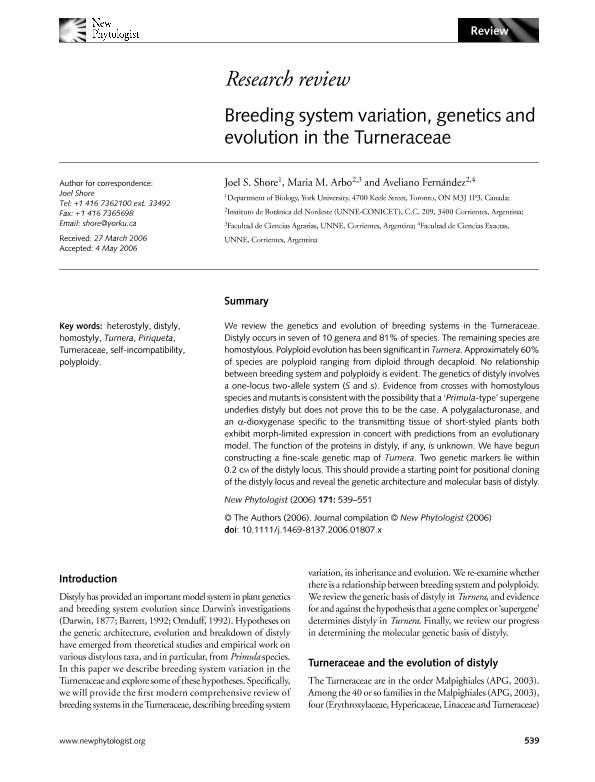Artículo
Breeding system variation, genetics and evolution in the Turneraceae
Fecha de publicación:
12/2006
Editorial:
Wiley Blackwell Publishing, Inc
Revista:
New Phytologist
ISSN:
0028-646X
e-ISSN:
1469-8137
Idioma:
Inglés
Tipo de recurso:
Artículo publicado
Clasificación temática:
Resumen
We review the genetics and evolution of breeding systems in the Turneraceae. Distyly occurs in seven of 10 genera and 81% of species. The remaining species are homostylous. Polyploid evolution has been significant in Turnera. Approximately 60% of species are polyploid ranging from diploid through decaploid. No relationship between breeding system and polyploidy is evident. The genetics of distyly involves a one‐locus two‐allele system (S and s). Evidence from crosses with homostylous species and mutants is consistent with the possibility that a ‘Primula‐type’ supergene underlies distyly but does not prove this to be the case. A polygalacturonase, and an α‐dioxygenase specific to the transmitting tissue of short‐styled plants both exhibit morph‐limited expression in concert with predictions from an evolutionary model. The function of the proteins in distyly, if any, is unknown. We have begun constructing a fine‐scale genetic map of Turnera. Two genetic markers lie within 0.2 cm of the distyly locus. This should provide a starting point for positional cloning of the distyly locus and reveal the genetic architecture and molecular basis of distyly.
Archivos asociados
Licencia
Identificadores
Colecciones
Articulos(IBONE)
Articulos de INST.DE BOTANICA DEL NORDESTE (I)
Articulos de INST.DE BOTANICA DEL NORDESTE (I)
Citación
Shore, Joel S.; Arbo, Maria Mercedes; Fernandez, Aveliano; Breeding system variation, genetics and evolution in the Turneraceae; Wiley Blackwell Publishing, Inc; New Phytologist; 171; 3; 12-2006; 539-551
Compartir
Altmétricas




